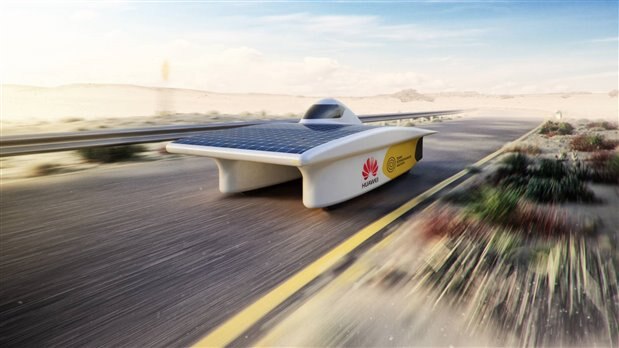Between now and the Bridgestone World Solar Challenge in October 2017, team Sonnenwagen Aachen will be finalising the build of their solar car, specially developed for the event by a collective of mechanical, electrical and aeronautical engineers from the renowned research institutions of RWTH Aachen and Aachen University if Applied Sciences. Their journey towards developing and building this innovative vehicle has already seen them face many challenges.
Competing in the World Solar Challenge will come down to a number of key features:
Build
Achieving the lightest possible vehicle weight will be critical to the success of the project. Members of team Sonnenwagen Aachen have been hard at work to produce a design that is light enough to attain the required speeds while also robust enough to handle the journey.
Performance
Using a variety of wind tunnel tests and simulation tools, the solar car will be designed to be as streamlined as possible with minimal drag.
Efficiency
In addition to the build and aerodynamic performance, the solar car must also utilise high quality solar cells to maintain speeds and minimise stoppage time. A fully realised driving strategy will also be developed to ensure successful completion of the challenge.
In order to achieve these goals, team members have been working across a number of disciplines in order to finalise the design and strategy ahead of the build.
Aerodynamics
In order to maximise speed and efficiency, the solar car must be as streamlined and aerodynamic as possible. With contributions from a collective of experts from the disciplines of aeronautical engineering, production engineering, energy engineering and computational engineering science, the team has been hard at work developing a low-resistance, stable and performance-optimised design for the car, utilising the latest CFD simulations, wind tunnel testing, intelligent system integration and a continuous optimisation model.
Electrical Engineering
The electrical engineering team has been working on the development of a photovoltaic system to produce the required energy to power the vehicle, with an electric motor functioning as the primary power source, plus a battery storage system to provide a permanent energy reserve where needed.
Mechanical Engineering
Building a new vehicle from scratch in just two years is no small task, and team Sonnenwagen Aachen's mechanical team has been responsible for a variety of development and design challenges, including the supporting structure, suspension and aerodynamics.
Driving Strategy
A great build alone won't be enough to win the World Solar Challenge. In order to stay ahead of the pack, a fully realised driving strategy is also essential. Team Sonnenwagen Aachen's dedicated driving strategists are working on simulating their route in advance, anticipating potential problems, developing communication tools with support vehicles and planning how to react to potential weather events.
With a little help from official partners such as Farnell element14 and Huawei, the team Sonnenwagen Aachen will hopefully be fully constructed and ready for the journey to Australia in October 2017. Once there, they will attempt to complete the 3,022km race from Darwin in the Northern Territories to Adelaide in the South, travelling the Stuart Highway to Port Augusta and then joining Highway 1. The race is intended to showcase the power and potential of solar energy in automotives, and is expected to attract teams from many of the leading engineering institutes and universities from all over the world.
Premier Farnell is supporting team Aachen Sonnenwagen by providing essential tools and equipment for the final build of their solar car. You can follow the progress of the team right here on the element14 community, or via their official website.

Top Comments
-

jkutzsch
-
Cancel
-
Vote Up
+2
Vote Down
-
-
Sign in to reply
-
More
-
Cancel
Comment-

jkutzsch
-
Cancel
-
Vote Up
+2
Vote Down
-
-
Sign in to reply
-
More
-
Cancel
Children